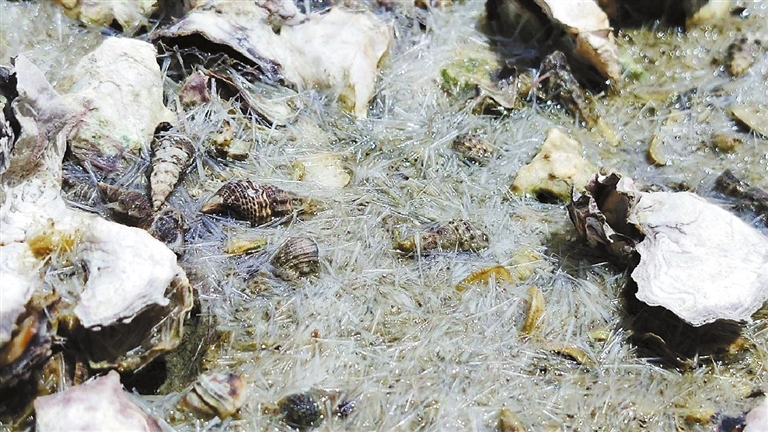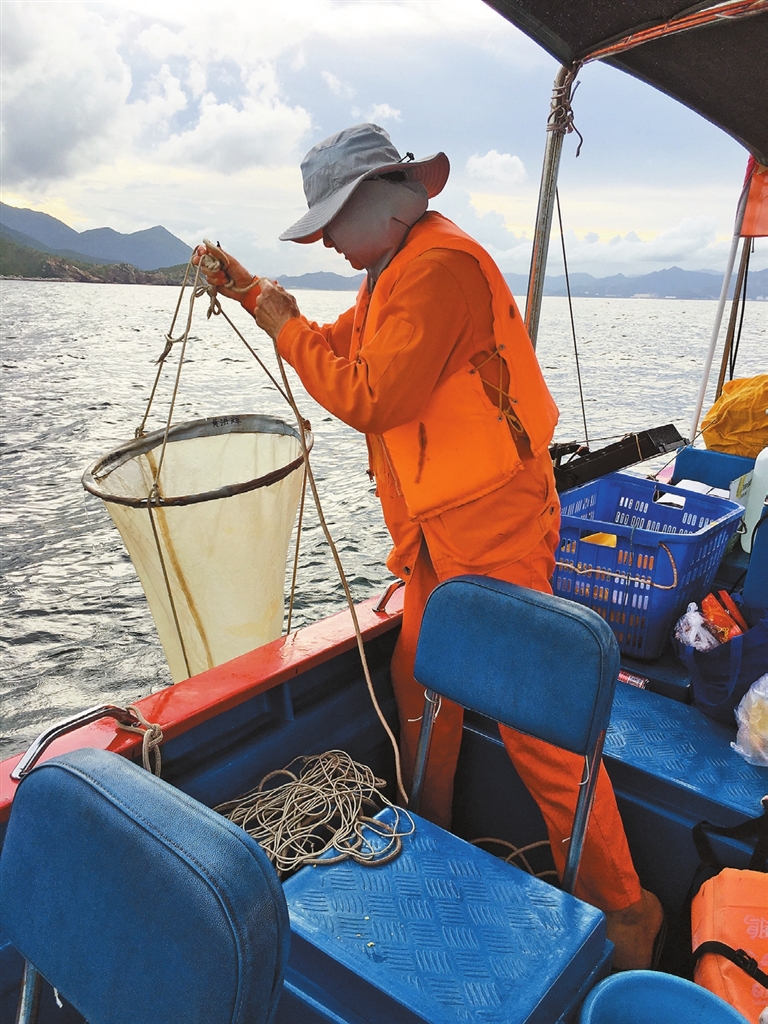

THE appearance of a large number of creseis aciculas, a plankton with a 2-3 centimeter transparent-white body, at Daya Bay has attracted the attention of scientists, Shenzhen Economic Daily reported. There were so many creseis aciculas that it formed a paste-like tide — found June 12 at the central and western Daya Bay area. This new phenomenon was observed by a marine scientific research team, led by researcher Huang Honghui, the South China Sea Fisheries Research Institute, Chinese Academy of Fishery Science (CAFS) said Tuesday. This is the first time such a number of creseis aciculas in China has been reported. It is unknown when the tide will ebb since the number of creseis acicula continues to grow, said an expert. Creseis acicula is a needle-shaped, shelled pelagic snail. It has a 0.5-1.5 centimeter sized shell, and a 0.3-1.0 millimeter sized mouth of the shell, as seen from the samples collected by the scientists. It is even shorter than the common sewing needle that most people are familiar with. The species widely grows in tropical and subtropical sea areas in the Atlantic, Indian and Pacific Oceans as well as at the South China Sea, East China Sea and south of the Yellow Sea. Creseis aciculas are also frequently found in Daya Bay between March and November each year, but usually in low density. With a wide range of baby fish and baby shrimp being freed into the sea for sea-farming, an unbalanced ecosystem may occur at Daya Bay area, according to Huang. Baby fish do not feed on creseis aciculas, therefore creseis aciculas could be predator-free and compete for food with baby shrimp, causing a negative burden to the food chain in Daya Bay. “A follow-up monitoring is needed for the environmental situation,” said Huang. The expert reminded residents not to catch the baby shrimp or floating solids in the water, and to avoid playing around in this area. “Creseis aciculas might be mistaken as baby shrimp but people will catch a pain when touching it. Furthermore, if people get choked by the creseis acicula, it might be stuck in the throat or lungs,” Huang said. Whether creseis acicula is poisonous remains unknown. (Chen Siqi) | 
